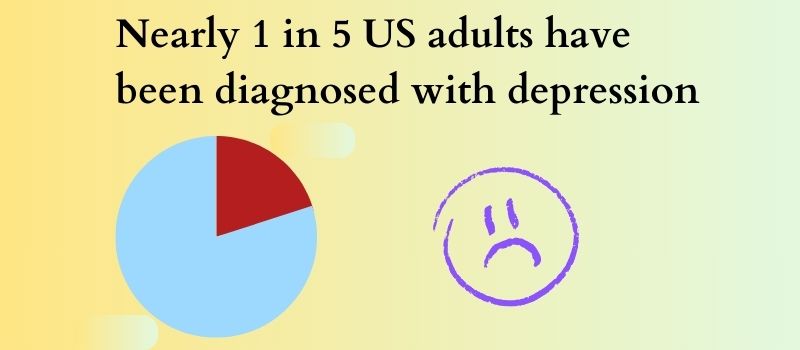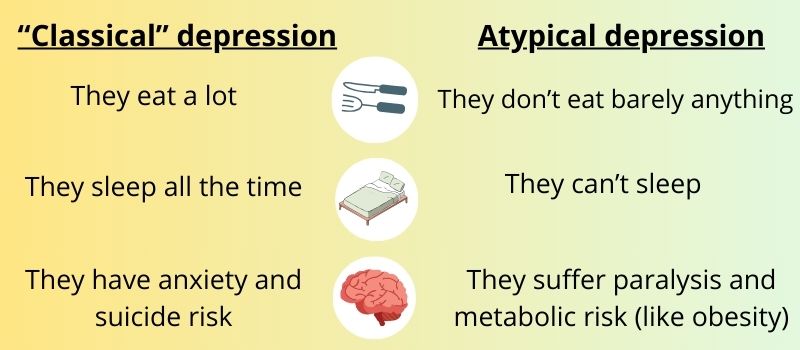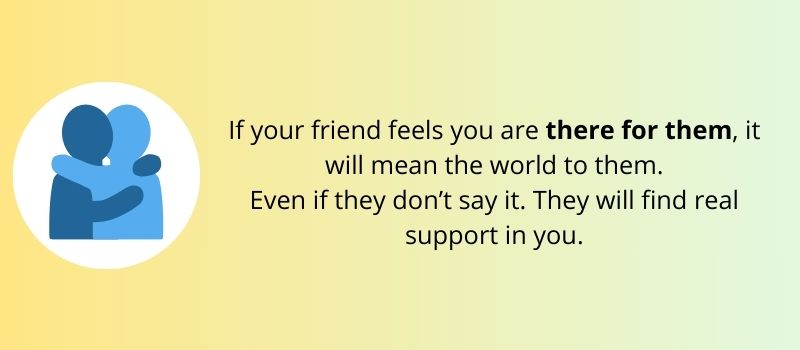So, you have a friend with depression you want to help, right?
That’s a common situation: 21 million people are fighting depression just in the USA.

However, most people struggling with depression generally don’t seek help. They believe nobody can help them, so why bother asking?
Sometimes, they don’t even realize they are depressed.
That’s why it’s important that you step in to help.
But where do you start? First, you need to recognize the symptoms of depression
What are the symptoms of depression?
The most basic symptom is sadness. Depressed people feel sad most of the time for no apparent reason.
They are tearful and irritated, and they feel empty inside.
How to tell a depressed person vs. someone just feeling sad
It can be tricky, but there are some clues. If the person is depressed:
– there is no clear cause, or is was a minor one
– it lasts for weeks or months
– there are other symptoms like changes in appetite or in their sleep pattern
Another symptom of depression is loss of interest. People no longer want to do the things they used to enjoy and they don’t even have the energy.
Not only do they feel sad but guilty as well, as if they have become a burden to others.
Because they are constantly ruminating, they can’t focus on anything, so they make shitty decisions and can’t remember things.
Some people turn to drugs and alcohol when they start feeling the first symptoms of depression to try to escape. If they also have suicidal thoughts, there is a high risk of overdose.
Their eating and sleep patterns change. There are 2 ways this can happen.
Some people stop eating, and they can barely sleep. That’s the classical depression.
For others, however, it’s the opposite: they eat without control, and they sleep all the time. We call this atypical depression.

The most common physical symptoms are:
Finally, some depressed patients have physical symptoms. It seems weird, but our brain is actually connected to the rest of our body.
– headaches
– digestive problems
– chronic pain
How to help your depressed friend (tips)
The most important thing is to be supportive. Be there.
Just being there will make him/her feel like they aren’t worthless.
Text them, call them, visit them. Just a simple message will be ok. Something like: “Good morning,” “You can do this,” or “One step at a time”.
Let them know that they can count on you. Tell them they are not alone in this and that you have their back for as long as it takes.
If they talk to you, listen. If you don’t know what to say, just listen.
Don’t feel like you have to be a therapist. Be a friend instead.
When they are done, give them a hug. It will make them feel better.

Stay in touch
People with depression tend to isolate themselves. They don’t want to hang out. So, reach out to them regularly, even if it’s just a text.
Try suggesting some fun activity together, something they used to enjoy before their depression. If they are up for it, it will surely cheer them up.
Don’t push them, though. If they don’t feel like doing anything, respect their space.
In some cases, you can offer some practical help
You can help them with daily tasks, like cooking or running errands.
Some depressed people have a hard time doing these tasks, and, in those cases, they really appreciate it.
Encourage them to look for help
Talk to them about seeing a therapist or a doctor. They may think they are helpless, but they are not.
This is even more important if your friend is thinking about damaging himself.
If that’s the case, don’t hesitate to look for help. You might regret it later.

Some things you should avoid saying/doing
First, you’ll want to avoid making things worse, right?
We sometimes say things that come through as insensitive, because we are not used to these situations.
Be careful to avoid the typical phrases like:
· “It’s not that bad” (insensitive sentence)
· “Just think positive” (don’t try to offer simple solutions, because there aren’t any)
· “You are bringing this on yourself” (don’t blame them)
These comments won’t help them, and they will feel like you don’t understand them.
You need to make them feel like you get them. Otherwise, they will feel unsupported–even if you have good intentions.
Remember not to push them. It’s okay to try and cheer them up, even suggesting some plans, but if they say “no,” don’t push them. Respect their space.
Finally, don’t talk all the time about depression. It will be nice for them to take their minds off it. Try to start positive, cheerful conversations when you have a chance.
Sources
·https://www.psycom.net/depression/major-depressive-disorder/dsm-5-depression-criteria
Leave a Reply